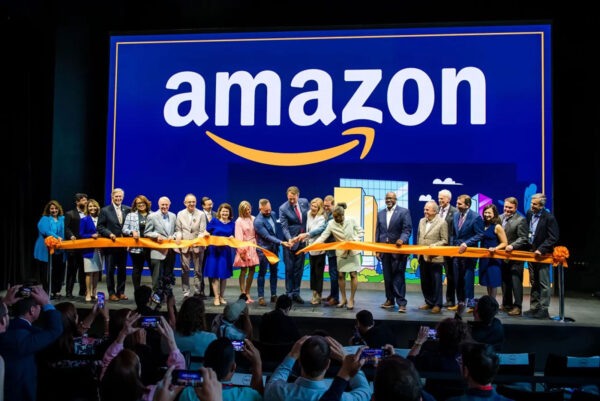This article was written by Arlington Economic Development.
Last week marked the official ribbon cutting at Amazon HQ2.
It’s been four and a half years since the announcement was made of Amazon’s selection of Arlington as its new home, and to say a lot has changed in that time would be an understatement. Projects evolve, priorities shift, and a global pandemic threw everything we know about the office market into flux.
In some ways, the opening of Metropolitan Park, a 2.1 million square foot office building, is even more significant now. Office building and leasing has significantly slowed in the past few years due to the ongoing trend of remote or hybrid work. To see these two towers welcome employees back to the office is both welcoming and inspiring to all of us who work in economic development circles.
However, the fact remains that Arlington is currently facing a record 22% office vacancy. It’s clear we need to think about some of our traditional office spaces a little differently. For some, that’s meant a residential conversion, but for others, the possibilities are even greater.
Last fall, Arlington County put together a task force to study commercial market resiliency; that is, ways we as a county can be more flexible and nimble in our zoning policies to better attract the types of businesses that can create environments to entice people back to the office. These are things like indoor recreation, animal boarding, artisan beverage makers and so many more. We’re continuing to explore alternate uses of older office product that become a win-win for businesses and the community.
But as we celebrate the opening of HQ2, we see it not as a culmination of our efforts since 2018, but rather a new beginning. HQ2 provides Arlington renewed recognition as a technology hub and attractive location for that talented workforce companies require. The 8,000 employees already assigned to HQ2 will also help to breathe new life into the neighborhood — those employees will be visiting restaurants, taking advantage of neighborhood services and enjoying parks and other amenities.
At the same time, we’re working to make those office corridors even more flexible for the types of businesses that are in demand. It’s a multi-tiered approach to ensure our commercial market remains strong.


